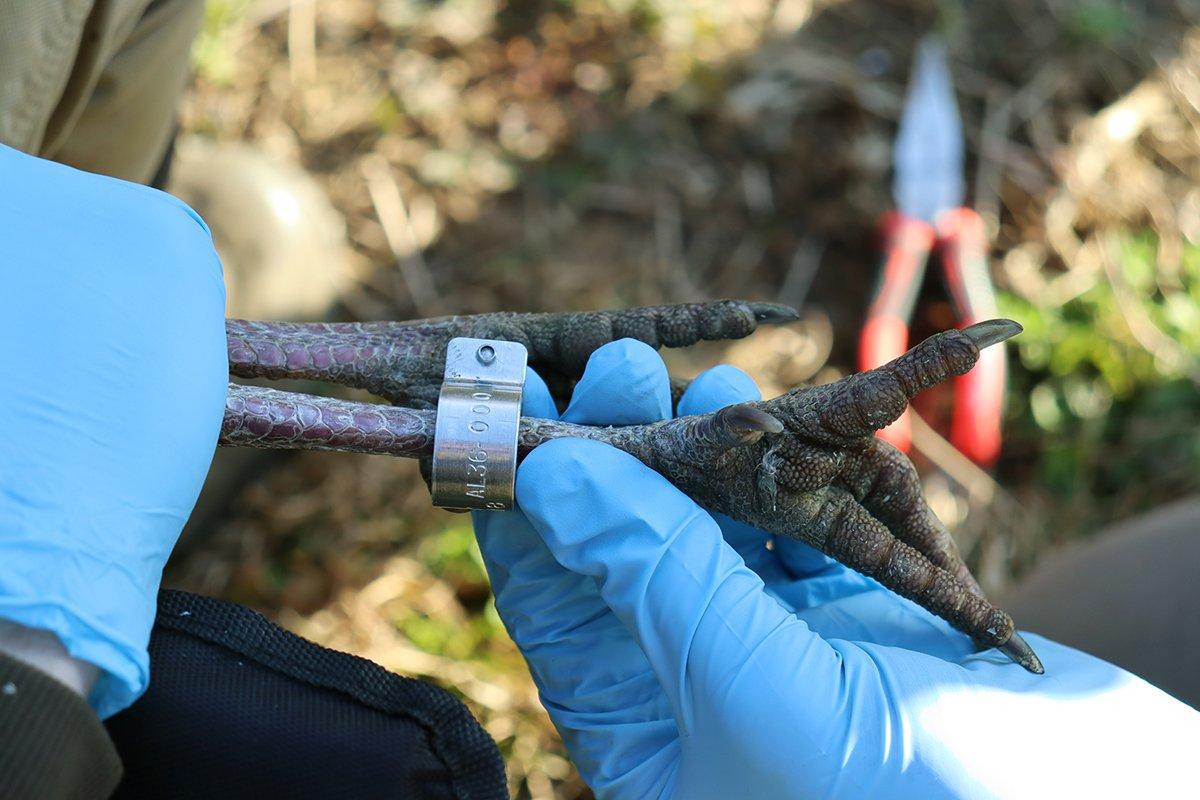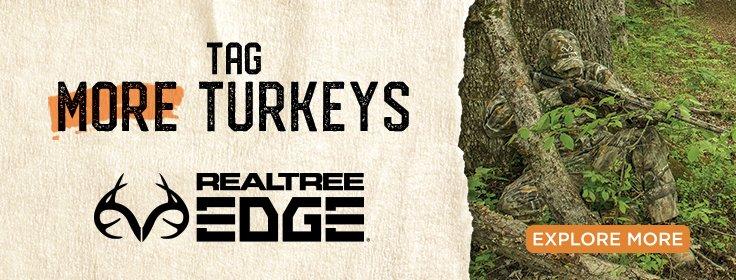Dr. Will Gulsby and his team at Auburn University have released the preliminary results from the first year of their Alabama turkey research project, and some of them are concerning
It's no secret to hunters that wild turkeys are in decline over large portions of the U.S. — with the Southeast being particularly hard hit. Dr. Will Gulsby and his team at Auburn University, with the support of groups like Turkeys for Tomorrow, the Alabama Wildlife Federation, and the National Wild Turkey Federation are trying to find out why.
With year one of a multi-year research project in full swing, Dr. Gulsby shared some of preliminary findings.
(Don't Miss: Turkeys for Tomorrow Group Aims to Help Declining Southeast Populations)
First, a little bit about the scope and objectives for the project, said Gulsby. We've broken the research down into different phases. In one phase, we are installing recording equipment, known as autonomous recording units (ARUs), across the state to listen for and record gobbling activity. These results will give us information on flock conditions in regional areas of the state and let us compare gobbling activity on public versus private lands, in various habitats, and in areas with varying hunting pressures. Gobbling activity is also one of the main indicators of breeding activity and tell us when peak reproductive activity occurs.
For year one of the project, 28 ARUs were placed on private lands across the state. At the same time, similar ARUs are being placed on public lands by a research team from the University of Georgia. The project will compare the final results from both private and public lands to see if there is a difference in gobbling timing or activity.
(Listen: What Hunters Should Know About Turkeys for Tomorrow Podcast )
These ARUs record all sounds for the programmed times. We use a computer program developed by Dr. Michael Chamberlain at the University of Georgia to filter the hours and hours of sound recordings and flag possible gobbling activity. Our grad students will then go in and physically listen to the flagged audio to determine if it was an actual gobble, said Gulsby. Results from this portion of the study should be available by early spring.
The second phase of the study involves the necropsy of hunter-harvested birds from the spring season. We've had excellent cooperation from hunters across the state, said Gulsby. More than 400 birds were turned in from 48 counties, or about 78 percent of the state. Among other things, these carcasses will be tested for three fairly common diseases found in wild turkey flocks. Gulsby reports that a small number of these birds were clearly diseased. The main pathogens the study will test for include Lymphoproliferative disease virus (LPDV), select hemoparasites (blackhead disease), and Reticuloendotheliosis virus (REV).
One thing I want to stress is that, as hunters, we need to stop looking for that one big answer that explains the decline in wild turkeys."
In addition to pathogen testing, male birds in the study will have their testes dissected to test for fertility. While results are still pending, Gulsby did report a clear difference in testicle size among adult male birds. It isn't clear yet if this size difference has an impact on fertility and the gobbler's ability to successfully mate.
(Listen: Should Turkey Hunters Worry About Gobbler Sperm Counts?)
Besides testing for pathogens and fertility, Gulsby reports that the hunter participation in this phase of the study is crucial. When hunters turn their bird's carcass in, they also fill out a survey with questions designed on how the turkeys acted, if they were alone or with other male birds, did they gobble or come in silent, and other information that the team hopes will allow the research team to compare trends from different areas to breeding success.
While all of this information will be helpful, it's the initial results from phase three of the project that has grabbed hunters' attention. This spring, a total of 20 mature hen turkeys were captured with rocket nets and fitted with backpack transmitters that allowed the team to monitor their nesting activity remotely throughout the spring season.
The results were concerning. Of the original 20 hens, 18 survived and 15 attempted to nest. Out of those 15 hens, only two successfully hatched at least one poult. The remaining 13 nests were abandoned or destroyed. None of the poults from either successful nesting survived.
(Don't Miss: What's Causing Poor Hatches of Turkey Poults?)
While Gulsby admits these results were cause for concern, he cautioned that the sky wasn't falling. You have to take the results in the proper context. We know that turkey reproduction is cyclical — with natural peaks and valleys. This was a small sample size for one year, so other areas or upcoming breeding seasons may have completely different results, he said.
What does the future hold for the study? Gulsby says that the disease and fertility studies will continue. Next year, we hope to add an additional 18 ARUs to additional private lands, he said. One of the reasons we are concentrating on private lands is that most of the wild turkey studies done in the past have been done on public land, while private land makes up the bulk of turkey habitat in the state.
(Don't Miss: Is Your Deer Bait Killing Turkeys?)
The team also plans to attach transmitters to 20 additional hens. One thing that I am excited about is the new battery technology in these transmitters, Gulsby said. Hopefully, it will allow us to monitor these same hens over a three- to four-year period. Questions we hope to get answers to are things like, Are certain hens just better at successfully nesting and raising poults than others? Are some hens more prone to re-nesting if original nests are destroyed, and when do the bulk of hens go on nest each year? One thing we were surprised by from this year's results was that the bulk of nesting activity happened later than expected. We saw the bulk of the activity starting in mid- to late-April this year.
Additional years of study should yield a much more precise overall picture of breeding activity and poult survival verses the single season data from this year. Gulsby stated that this study wouldn't be possible without financial support from conservation groups like TFT, the AWF, and the NWTF.
One thing I want to stress is that, as hunters, we need to stop looking for that one big answer that explains the decline in wild turkeys. Most likely, it's due to a combination of factors. And those factors might be different in different areas, even different combinations of factors from one location to the next might be to blame, Gulsby said. Hopefully, studies like this one will lead to those answers and give hunters and game managers the tools needed to fix them.












